If you’ve ever tried to learn knots before, it can feel overwhelming to figure out all the overs and unders and wraps and on and on. Sometimes watching videos doesn’t even help!
Don’t worry. I’ve been there, and I’ve got what you need to learn the secret of how to learn knots.
5 Tips For Learning Knots
Here are 5 essential tips for learning knots:
By the way, as an Amazon Associate, I earn when buying qualified products through links on my site.
1. Most Important: Learn the Knot Foundations
The trick to learning your knots is to learn the knot foundations.
Learning the knot foundations will accelerate your knot learning as well as help you remember your knots for much longer because you understand how the knots work.
What are the knot foundations? Well, you’ve come to the right place. Knot Foundations Here
In this article, I’ll show you the fundamental knot formations so you can rocket your knot learning forward–you might want to bookmark this page. And also, make sure to visit our rope glossary if you see a term you’re not familiar with.
Learning the knot foundations will accelerate your knot learning as well as help you remember your knots for much longer because you understand how the knots work.
2. Get A Knot Book That You Can Reference
In this day and age where they have videos for everything, you might wonder, why would you get a book? Well, the truth is that a book doesn’t run out of battery and that can mean all the difference in a situation where you need to tie a knot you can’t remember.
One of my favorite books I used while studying books is “The Field Guide to Knots“. (see on Amazon, here)
The Field Guide to Knots has every type of knot there is and has decent pictures (although some of them are hard to see what’s going on), so you can take this with you on an adventure and reference it to figure out lashing for example.
3. Take A Knot Course
Courses can be super helpful because they can walk you through the entire process of learning–so you’re not jumping into an advanced knot without knowing the fundamentals–it’s easy to get lost in the learning process unless you have a guide to walk you through from beginning to end on how to learn something.
I actually created a knot course for just this purpose, you can find more about it, here.
4. Get a Practice Rope By Your Desk
You’d be amazed at how much dead time there is in a day. I work a desk job and there’s a lot of time where I’m just waiting.
If your job is on your feet, you may not have that opportunity, but you still probably have a TV at home–if you leave a practice rope by a place where you hang out, you can just move through the knots you’re trying to learn while you listen or watch something.

Now, while you’re waiting for your computer to do its mandatory updates, you can practice your knots with your rope.
5. Learn the Knots Backwards and Forwards, Upside Down and All Turned Around
When you’re learning your knots it’s easy to feel like you knot a knot if you can follow an example in a video or in a book when all the rope is lined up exactly as you saw it in the tutorial.
But what if the thing you’re tying a rope to isn’t anything at all like the tutorial?
To really understand a knot it helps to tie it up, and down and all around. Flip your perpective (if you’re tying to an object on the right, try tying it to something on the left).
This may be overkill for some knots, but I’d say to learn at this level for critical knots like the figure-of-eight knot, the clove hitch, and the bowline.
Knot Foundations (How To Learn and Understand Knots)
If you’re like me when you tried to learn knots, tying things was just a matter of memorizing how ropes go under and over each other. But this isn’t true! Knots follow basic patterns that are built on each other. Once you get a feel for these patterns, you can use these patterns to break down and understand what you’re doing.
Rope Formations
It all starts with understanding the basic shapes of rope. Let’s check these out. (Also, I put this concisely in my Rope Glossary if you want a cheat sheet to refer back to)
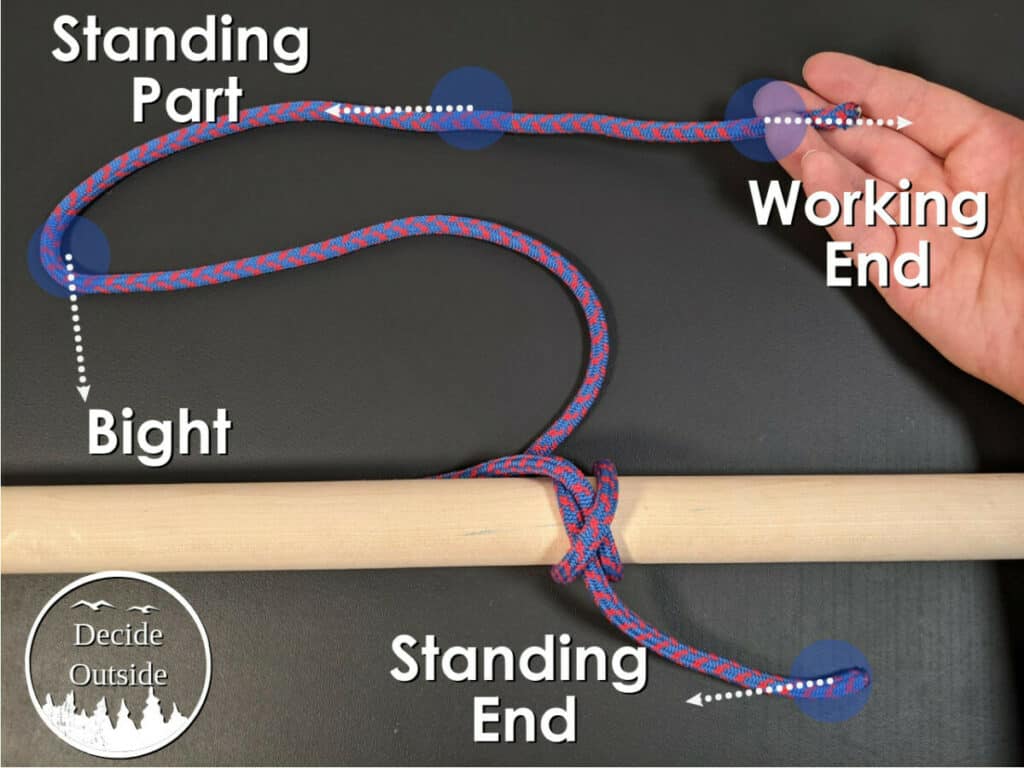
Basic Rope Terms
- The Standing End is the part of the rope that is usually affixed to something else (think an anchor point, another rope, etc.)
- The Standing Part is the “rest of the rope”, not including the end of the rope.
- The Working End is the part of the rope that you are manipulating and using to tie the knot
- A Bight is when you make a narrow arch in the rope.
Understanding these basic rope terms is hugely important to learning knots. If you’re trying to learn a technical knot, understanding what parts of the rope are which is essential, especially if you are learning from a book (because pictures aren’t always easy to follow).
Foundations
Let’s start by learning the Half Knot.
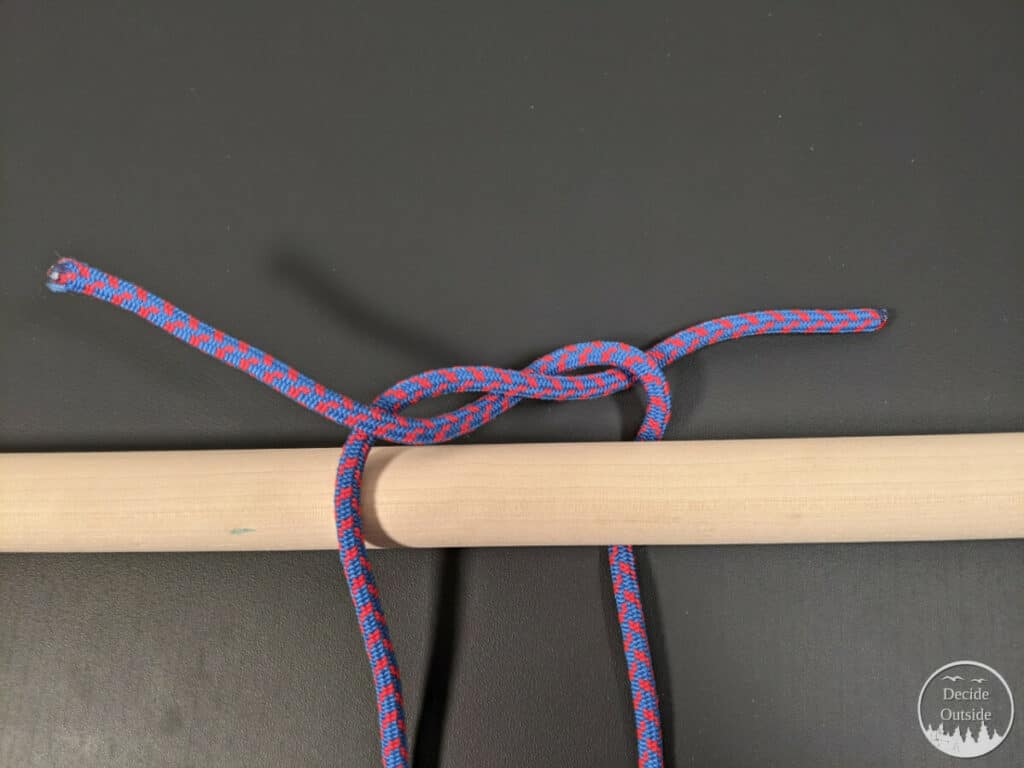
Half Knot
The easiest way to describe a half knot is half of a square knot. So after you cross the ropes forming an X, you take one side and pass it over and under the opposite standing part. This isn’t really used by itself but is a foundation formation for other knots.
Learning the Square Knot Using the Half Knot Foundation
Now that we know the Half Knot Foundation Knot, we can use this to learn the square knot.
Steps:
- Make a Half Knot starting with the left rope over right
- Make another half knot starting with the right rope over left
- Pull to tighten
Notice that this knot is very simple to explain if you already know the Half Knot foundation.
(If you want a detailed picture and video instructions for tying the square knot, make sure to check out my article, here)
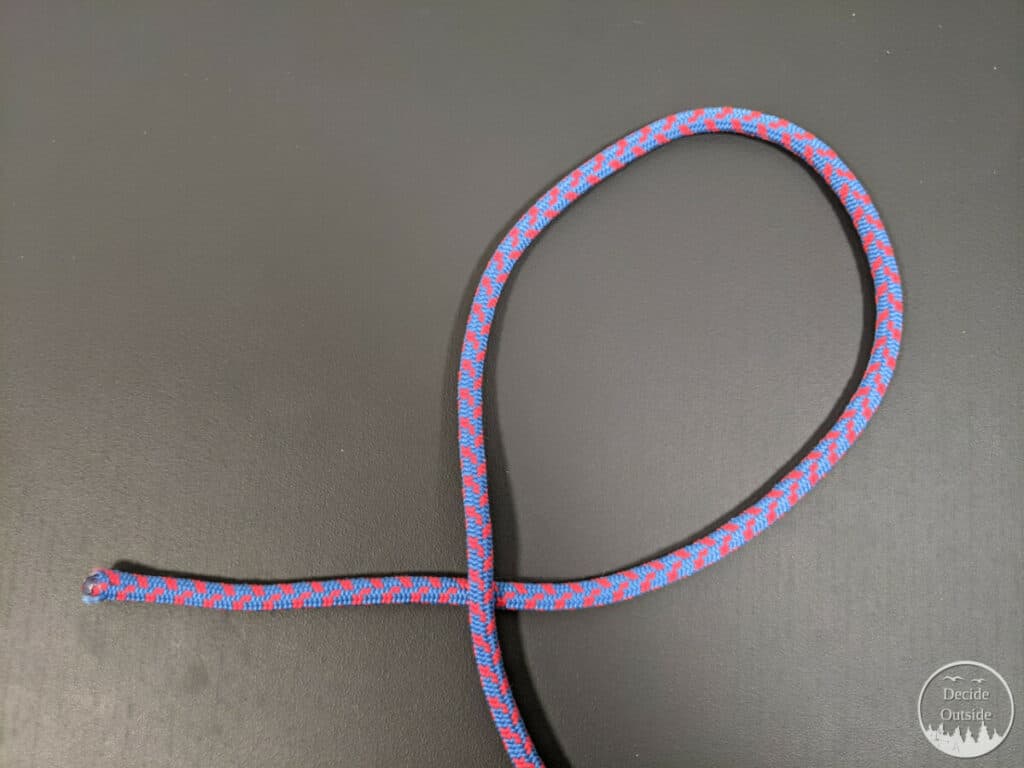
Right Underhand Crossing Turn
A clockwise loop with the working end sitting behind the standing part.
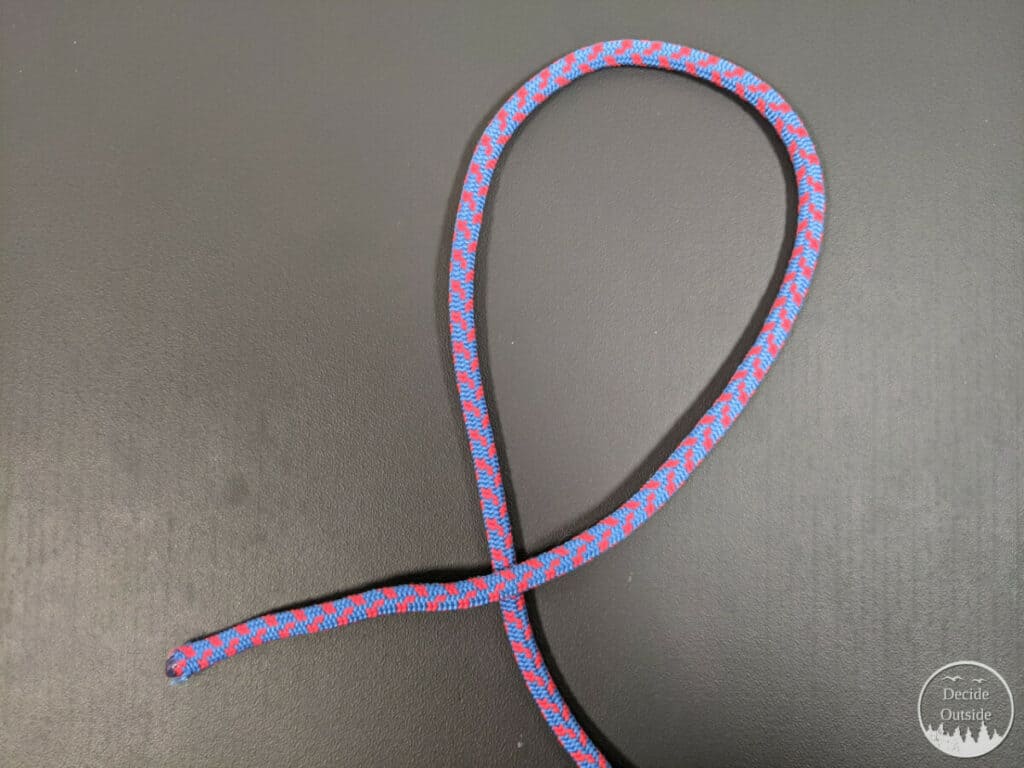
Right Overhand Crossing Turn
A clockwise loop with the working end sitting on top of the standing part.

Left Underhand Crossing Turn
A counterclockwise loop with the working end sitting behind the standing part.

Left Overhand Crossing Turn
A counterclockwise loop with the working end sitting on top of the standing part.
The crossing turns are very simple, but whether the rope goes to the left or the right or if it goes under or over the rope can make a big difference in a knot. The pattern is simple:
- If the working end goes OVER the standing part, it’s an overhand crossing turn
- If it goes counterclockwise, it’s a LEFT crossing turn, if it goes clockwise it’s a RIGHT crossing turn
Learning the Slip Knot Using the Crossing Turn Foundations
With this knowledge, let’s make a simple knot, the slip knot:
- Make a Left Overhand Crossing Turn
- With the standing part (below where the working end crosses the standing part), pull a bight through the front of the turn (don’t go under the turn).
- Keep the bight in place while pulling the working end
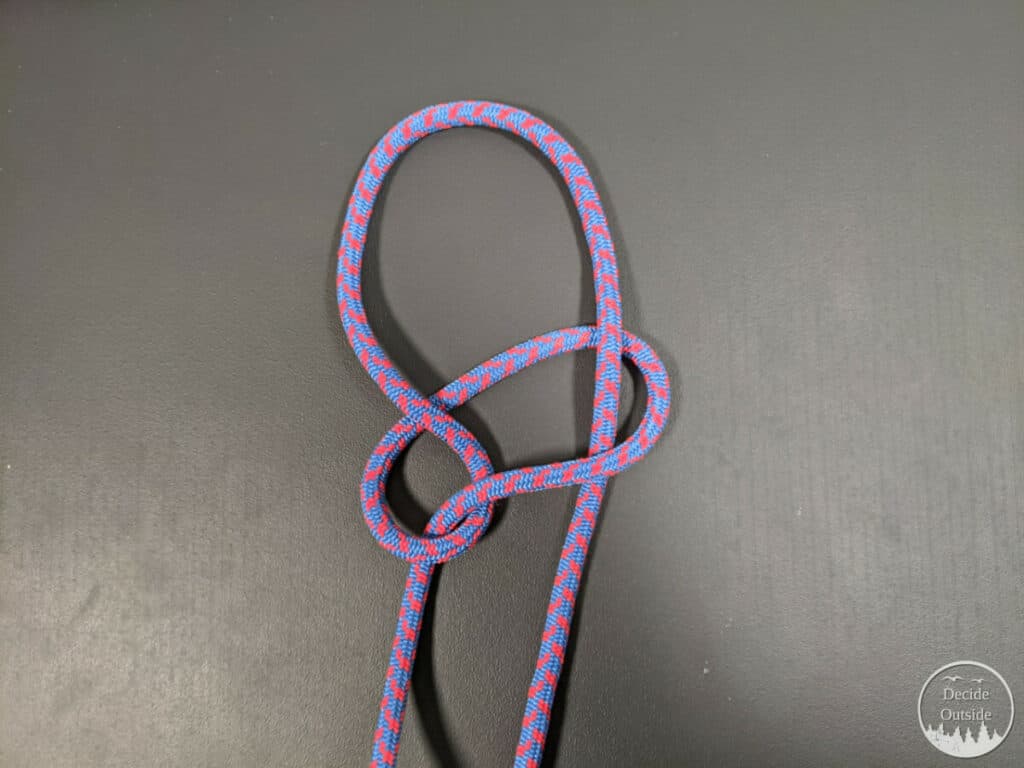
Slip Knot
The slip knot is the same as an overhand knot except you pass a bight through the loop instead of the working end
Hopefully you’re beginning to see the power of learning the foundations–it makes it much learn and remember knots.
Let’s learn some more foundations:
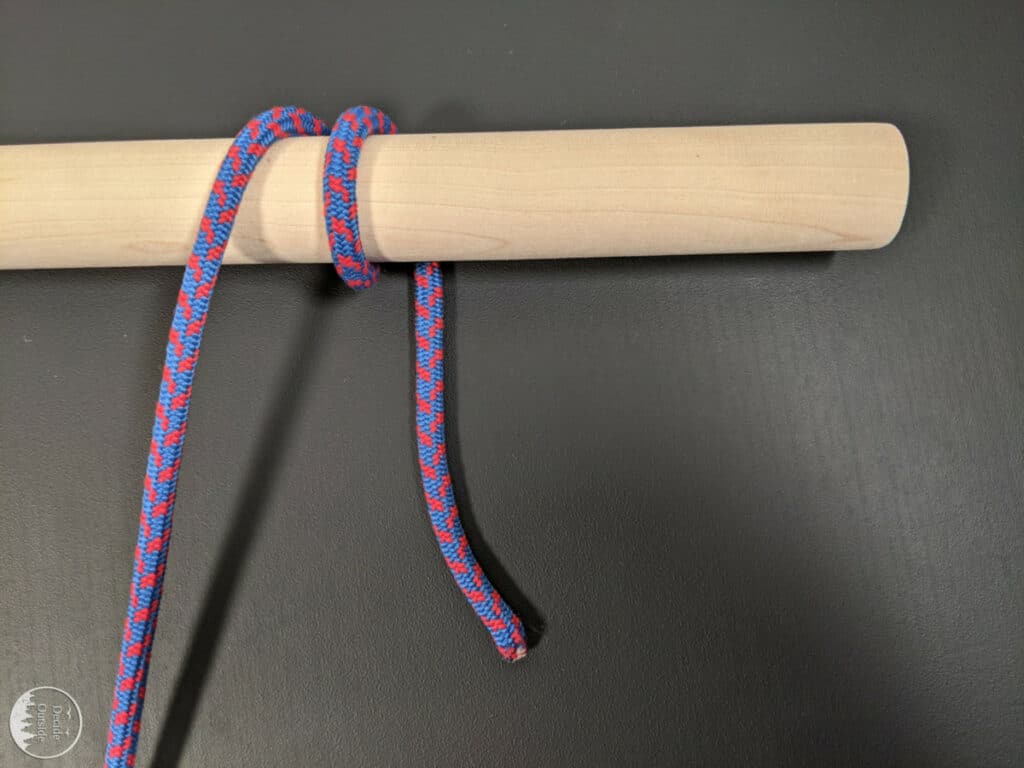
Round Turn
A 360-degree wrap around an object or rope

Half Hitch
A half hitch is when you pass a working end over the standing part, and then behind itself. You can think of it as making a number nine with the working end and the standing part.
The half hitch is an incredible formation that you’ll use EVERYWHERE. It’s super important to know how it works and where to use it. Let’s make a simple hitch:
Learning the Round Turn and Two Hitches Using the Half Hitch Foundation
- Make a Round turn around an object giving yourself plenty of slack in the working end
- Form a half hitch with the working end around the standing part of the rope
- Form another half hitch making sure to cross over the existing half hitch.
Again, once you understand the knot foundations, notice how simple the instructions are! It takes a bit of practice to get to the point where all that makes sense, but once you get there, you’ll be able to know and understand knots like it’s nobody’s business.

I teach all of these foundations as well as all the knots you’d ever need in my knot course, here. Make sure to check it out. If you want a cheat sheet with all the foundations, check out my rope glossary here.

